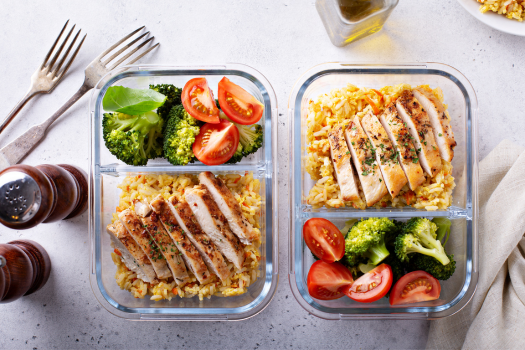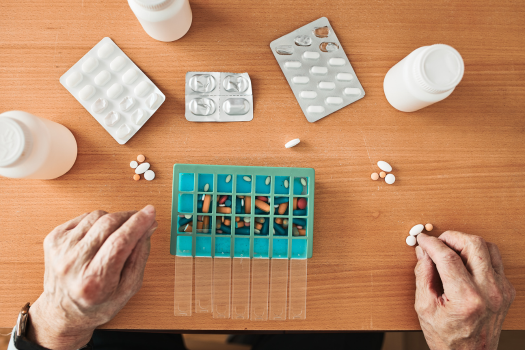
Aging is actually more physiological than chronological. It’s the reason why some 50-year-old people look to be in their 70s. And yet, a 70-year-old can look younger and have a higher quality of life. There are seven critical factors that promote healthy aging. We’ll discuss those in this article. And then we will focus on body weight and muscle mass in seniors – the effects of muscle loss and the nutrition necessary for health and vitality in seniors. Assisting Hands can help seniors in the quest to age healthily. We serve clients in Montgomery County and Northern Fairfax County.
Our thanks to Dr. Casi McFarland for this article. Dr. Casi is the owner of Envision Health Chiropractic and Wellness Center, www.envisionhealthchiropractic.com, in Rockville, MD (301) 541-3821.
Aging Is Personal. There are seven (7) critical factors that promote healthy aging. They are:
- Adequate and regular sleep. There is evidence that a lack of sleep impacts memory and cognitive performance. Sleep deprivation may also cause skin to age faster.
- Frequent, well-balanced meals. Unfortunately, many seniors don’t eat properly. And some stop eating for various reasons, such as a loss of taste or smell, oral health problems, difficulty in swallowing, changes in the digestive system, a decrease in immune system, a loss of muscle mass, social factors and neurological changes.
- Sufficient physical activity. Regular physical activity can help delay or prevent many chronic diseases.
- Adequate social support. Having social contact and participating in social activities contribute to the wellness of elderly individuals.
- Avoiding detrimental substances. Smoking and drugs can speed up the aging process. It’s also recommended that seniors limit alcohol consumption.
- Maintain proper body weight and muscle mass. The effects of body weight and muscle mass are critical. We’ll discuss this in detail below.
- Maintain positive mental health. Loneliness, psychological distress and isolation can all impact the physical well being of seniors.
The Importance of Maintaining Proper Body Weight and Muscle Mass. To understand the importance of good nutrition, it’s good to know exactly how our bodies age.
Muscle Loss and its Effects on Aging. A loss of muscle mass affects an individual’s strength, and therefore balance and coordination. As our balance is affected, we risk falls, trauma and injury. A loss of strength and balance can also further inactivity. Muscle loss can also impair our social and mental functions. And taken as a whole, all of these factors can lead to early disability, hospitalization and mortality.
There’s a Name for it. A loss of muscle mass is called Sarcopenia – the slow loss of skeletal muscle. Sarcopenia is a natural part of the aging process. When an elderly person loses muscle mass, they lose strength and endurance. We all lose muscle mass. Consider these statistics:
- Muscle mass loss starts when we are in our 30’s.
- By age 50, the average person loses 1-2% muscle mass per year.
- Most muscle mass loss occurs in the lower body.
- This muscle mass decline leads to a decrease in strength: 15% per decade by age 50-60; 30% loss in the 60’s; 50% loss by age 70 plus.
While the loss of strength and muscle mass as we age is inevitable, regular physical activity can prevent both the age-associated loss of muscle strength and the increase of muscle fat. While there are reasons why many seniors decrease their physical activity – changes in metabolism, hormones, inflammation, a lack of vitamin D – here we will focus on inadequate nutrition.
First, let’s talk about protein intake. The minimum protein needed for proper nutrition is .36 grams/pound. So, for example, a 100 pound person should take in 36 grams of protein per day. A 150 pound person – 45 grams of protein. It is recommended that most of the day’s protein (60%) should be eaten at lunch or after exercise. One of the reasons for early intake of protein on a daily basis is that some proteins can be hard for seniors to digest. If that’s the case, seniors should talk with their doctor. Adding zinc to their health regimen can be quite helpful.
How to get more protein in the diet. There are several ways to add protein to a diet. Consider adding 15 grams of essential amino acids, which are the building blocks of proteins. Whey protein, available in powder form in most grocery stores, can be added to shakes or smoothies, allowing for muscle protein synthesis.
How many calories does a senior need? Here are some examples:
- 50-year-old sedentary woman needs 1600 calories
- 50-year-old active woman needs 1600-2000 calories
- 50-year-old sedentary man needs 2000 calories
- 50-year-old active man needs 2000-6000 calories
Antioxidants and carotenoids. Antioxidants can prevent or delay cell damage. They may protect the body from heart disease, cancer and other diseases. Carotenoids are also beneficial antioxidants that can help protect seniors from disease and enhance immune systems. Examples of antioxidants and carotenoids are carrots, peppers, chilies, parsley, pumpkin, squash, yams, dandelions, collards, other greens, tomatoes, bananas, plantains and tangerines.
Protein rich foods. To fulfill the protein intake as noted above, it’s important to serve protein rich foods. Lean meats are among the most popular and easiest ways to get daily protein. Lean meats, such as poultry, pork and fish provide about 21 grams of protein in a single 3 oz serving. A 3 oz. serving should be about the size of a deck of cards, or it should fit in the palm of your hand.
Here are some other examples of protein-rich foods.
- 5 oz Greek yogurt – 12-18 grams
- ½ cup beans – 6-9 grams
- 1 oz hard cheese (about the size of a thumb) – 7 grams
- 2 T nut butter – 7 grams
- 3 oz tofu – 6 grams
- ¼ cup nuts – 4-6 grams
- 1 egg – 6 grams
Poor nutrition can lead to many problems. For seniors especially, eating a healthy and balanced diet can help promote activity, provide energy, control muscle mass and prevent some diseases.








